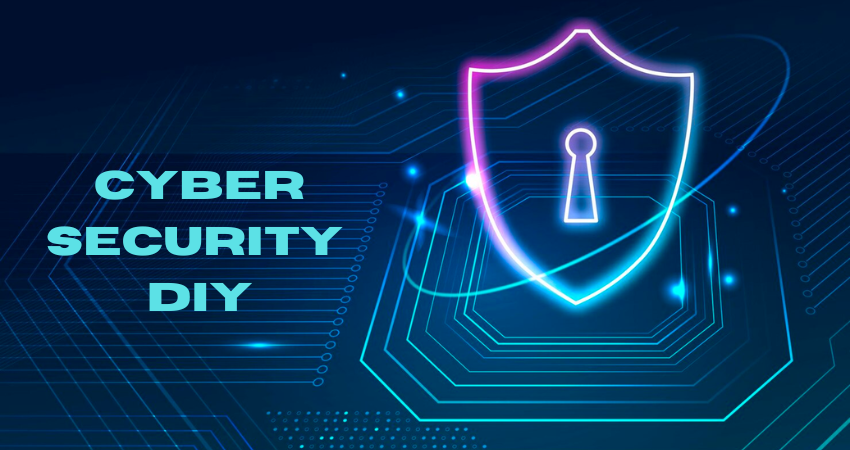Table of Contents
Introduction
In today’s digital age, the importance of cyber security cannot be overstated. With the increasing prevalence of online threats and data breaches, protecting your digital life has become a necessity. Fortunately, enhancing your cyber security doesn’t have to be a daunting task. In this blog, we’ll introduce you to the concept of a “Weekend Project” designed to empower you to take control of your online security. Over the course of a weekend, you can implement practical steps to fortify your defenses and safeguard your digital world.
Assessing Your Cyber Security Needs
Identifying Vulnerabilities
Before diving into your cyber security weekend project, it’s crucial to understand your current vulnerabilities. Take a moment to conduct a self-assessment of your online habits and practices. Recognize common vulnerabilities, such as weak passwords, outdated software, and unsecured Wi-Fi networks.
Setting Security Goals
With a clear understanding of your vulnerabilities, define your security goals. What do you want to achieve during this weekend project? Prioritize your goals based on your assessment. Whether it’s strengthening your passwords, securing your Wi-Fi, or educating yourself and your family about online threats, having clear objectives will guide your efforts.
Planning Your DIY Cyber Security Weekend
Creating a To-Do List
To ensure a productive weekend, develop a comprehensive checklist of tasks. Organize these tasks by priority and complexity. This to-do list will serve as your roadmap for the weekend, keeping you focused and on track.
Gathering Necessary Tools and Resources
Before you start, make sure you have the necessary tools and resources at your disposal. This may include antivirus software, password managers, and guides on cyber security best practices. We’ll provide links to reputable sources where you can download these essential security tools.
Day 1 – Strengthening Password Security
Password Management Basics
On the first day of your weekend project, we’ll delve into the fundamentals of password security. You’ll learn why having strong, unique passwords for each of your accounts is crucial. We’ll also introduce you to the concept of password managers and their role in simplifying password management.
Installing and Configuring a Password Manager
Step by step, we’ll guide you through the process of choosing and setting up a password manager. You’ll discover tips for generating and managing complex passwords, ensuring that your online accounts are more secure than ever before.
Day 2 – Updating and Securing Devices
Updating Software and Firmware
On day two, we’ll focus on device security. We’ll emphasize the importance of keeping your operating systems and software up to date. You’ll receive instructions on how to check for and install updates, reducing the risk of vulnerabilities.
Securing Wi-Fi Networks
Unsecured Wi-Fi networks can be a gateway for cybercriminals. We’ll discuss the risks and walk you through the process of securing your home Wi-Fi network. By the end of the day, your network will be fortified against potential threats.
Day 3 – Educating Yourself and Family
Online Security Education
Continuous learning is key to staying ahead of cyber threats. We’ll explore online resources and courses that can help enhance your cyber security knowledge. The more you know, the better you can protect yourself and your loved ones.
Family Cyber Security Briefing
Online security is a family matter. We’ll provide tips for educating family members about online safety and security. You’ll learn how to create a family cyber security plan that ensures everyone is on the same page when it comes to digital safety.
Day 4 – Backing Up Data
Data Backup Importance
Data loss can be devastating. On day four, we’ll stress the importance of regular data backups in safeguarding your precious files and information. We’ll discuss various backup options, helping you choose the one that suits your needs.
Setting Up Automated Backups
We’ll walk you through the process of setting up automated backups for your essential data. Additionally, we’ll recommend backup solutions and cloud storage services that can provide secure and reliable data protection.
Day 5 – Monitoring and Vigilance
Continuous Monitoring
Cyber security isn’t a one-time effort; it requires ongoing vigilance. Learn how to set up alerts and notifications for suspicious activity, ensuring that you’re always aware of potential threats to your digital assets.
Phishing Awareness
Phishing attacks are a common online threat. We’ll educate you about various phishing techniques and provide tips for identifying and avoiding phishing attempts. By the end of day five, you’ll be better equipped to recognize and thwart phishing attacks.
Conclusion
In conclusion, your cyber security DIY weekend project can be a transformative experience. By following this guide, you’ve taken significant steps toward protecting your digital life. Remember that cyber security is an ongoing process. Continue maintaining and improving your online security to stay one step ahead of cyber threats. Empower yourself and enjoy the peace of mind that comes from taking control of digital safety.
Read More Articles
Data Breaches: Prevention and Response Strategies
Ransomware Demystified: How to Defend Your Data
Incident Response: How to React When Breached
Cyber Security for Kids: Keeping Your Family Safe
Weekend Warrior: Your Cyber Security Checklist

